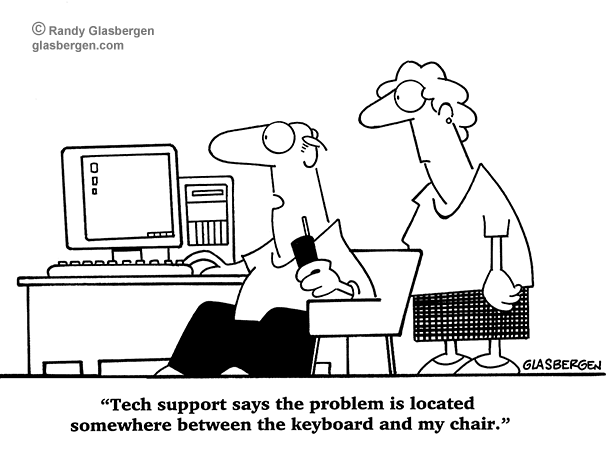I bought my new HP Pavilion 17 notebook (laptop) on October 1, 2014, and I've been having problems with the touch pad ever since. In a previous thread (
HERE) I wrote about the problems involved in converting to a new computer. All problems have been resolved, except for one:
the touch pad on my lap top doesn't work properly. Initially, the problem was the touch pad would simply stop working.
I've taken the computer back to the store several times, and each time the touch pad problem appeared to be fixed, but then the touch pad stopped working again. The last time was on November 24, 2014. The touch pad was working fine when I tested it in the store. However, the fix only lasted until I got home and turned on my computer again. When I did so, the touch pad wasn't working.
At one time, the problem appeared to be that the "two finger scroll" functions were at fault, since it seemed that things would work fine when those functions were turned off. That might still be true, but the touch pad stopped working even when I had the "two finger scroll functions" turned off.
I bought a mouse on November 2, 2014, so as of that time I was no longer dependent on the touch pad. And, it was clear that I much preferred using a mouse to using the touch pad, so I just used the mouse from that time on. The only "solution" at the time seemed to be to reload the Synaptic touch pad driver every time the problem occurred. But, that didn't seem like a viable solution, since it wouldn't help me when I was in an hypothetical situation where I couldn't use the mouse. I could probably learn how to to reload the touch pad driver to get it working again, but why do so when I still won't be able to load the driver unless I have the mouse connected?
Then a discovery.
On the morning of January 29, 2015, I brushed away a speck of dust from the touch pad and
the cursor moved. Checking further, I found that the touch pad was working "normally," but without the two finger scroll function. The touch pad had apparently
fixed itself!
I was so excited that I posted a message to Microsoft's user forum with the subject
"My touchpad suddenly started working." (I thought Microsoft may have applied a fix. When I noticed the touch pad was working, I'd also noticed that someone was updating something in the "background," because there was a significant delay between me typing and the letters appearing on the screen.)
But, it only lasted until I turned the laptop off to go to lunch. When I returned from lunch and opened the lid on my computer, the touch pad was "dead" - totally nonfunctional - as usual.
Meanwhile, someone on the Microsoft forum has asked me if, in the Device Manager area, under
"Mice and other pointing devices," it says the touch pad is not functioning. I checked, and it said the touch pad was "working properly" even though it wasn't functioning at all. That was the end of the discussion.
Then, on the morning of February 1, it happened again. I brushed away a speck of dust on the touch pad, and the cursor moved. The touch pad was functioning again (without the two finger scroll function). It lasted until I closed the lid on the computer to go to lunch.
When it happened again on the morning of February 4, I decided to do some research and to start being more scientific about the figuring out the cause of the problem.
I did a Google search for "touchpad
on-switch" and found a discussion HERE
about such a thing on a HP notebook. I found that some HP laptops have an on-off switch for the touch pad. You either tap the upper left corner twice to turn the touch pad on and off, or you press the upper left corner and hold it for a few seconds to perform the same functions. But, that doesn't work on my laptop.
Something is turning the touch pad on, however. I was becoming certain that closing the lid on the laptop was what turned the touch pad
off, but when I did a test on Feb. 4 while the touch pad was working, only closing the lid for about 30 seconds, the touch pad was still working when I opened the lid and signed on again. However, when I closed the lid to go to lunch and run some errands for a couple hours, the touch pad was no longer functioning when I returned.
I also did another test while the touch pad was working. I swiped my finger in from the left side to see if it would turn the touch pad off. It didn't, but while my finger was still on the touch pad, the cursor wasn't moving. I had to lift my finger and put it down again to get the cursor to start moving again. So, it had temporarily turned off the touch pad - sort of. (The reverse doesn't work. I.e., when the touch pad isn't working, swiping my finger in from the left side does nothing.)
This morning I went through the pdf file of instructions for my laptop to see if it says anything about any switch for turning the touch pad on and off. It doesn't.
So, now I'm waiting for the touch pad to start working again. And I'm keeping a record of what tests I did when the touch pad starts working again all by itself. It hasn't escaped my notice that the touch pad seems to start working around every third day. We'll see if it starts working on the 7th. If it does, I think I have an idea where the problem comes from.
Hmm. When I returned home on the afternoon of the
6th and turned on my laptop, the touch pad was working again. So, it wasn't quite three days. But there is still some kind a pattern to it. The touch pad kept working after I closed the laptop lid a couple times for 10 minutes or so. But, on the morning of the 7th it was no longer working. And then on the morning of the
8th it was working again. And when I turned on the laptop in the afternoon it was
still working. And it was still working on the morning of the 9th. In the afternoon, it wasn't working. And, for the
second time, it worked 2 days in a row when it worked all day on the 11th and was still working on the morning of the 12th. Here's a summary of the times the touch pad worked:
Jan. 29: worked in the a.m.
Feb. 1: worked in the a.m.
Feb. 4: worked in the a.m.
Feb. 6: worked in the p.m.
Feb. 8: worked in the a.m.
& p.m.
Feb. 9: worked in the a.m.
Feb. 11: worked in the a.m.
& p.m.
Feb. 12: worked in the a.m.
& p.m.
Feb. 13: worked in the p.m.
Feb. 14: worked in the a.m.
& p.m.
Feb. 15: worked in the p.m. - sort of
Feb. 16: worked in the a.m.
& p.m - sort of (see comments).
Feb. 17: worked in the a.m.
& p.m.
Feb. 18: worked in the a.m.
& p.m.
Feb. 19: worked in the a.m.
On Saturday, Feb. 15, I noticed that the touch pad was working but then stopped working. It stopped when I moved the computer into another room, where I turned on the computer first, and then the mouse. Experiments on Sunday the 15th and Monday the 16th seem to confirm that
the touch pad works ONLY if I turn on the mouse before turning on the computer.
Of course, that means I need the mouse in order to make the touch pad work. That makes the touch pad worthless, since the only time I would need it is when I'm in a situation where I can't use the mouse.
What I'm going to do for the next five days is turn my computer on and off the same way every time as follows:
1. Turn on the mouse.
2. Turn on the power to the large monitor.
3. Open the computer.
4. Use the mouse.
5. Check to see if the touch pad works.
When I shut down for lunch and in the evening, I'll do the following:
1. Close the lid on the computer.
2. Turn off the mouse.
3. Turn off the power to the large monitor.
When I've done that for five days, if the results are consistent and the touch pad always works, I'll try switching some element to see what the effect is. I'll write the results in comments below, instead of here.
I need to confirm everything. But, I think I'm getting close to having enough information to use when I discuss the problem with HP or with Microsoft or with the people at the computer store.
Ed













